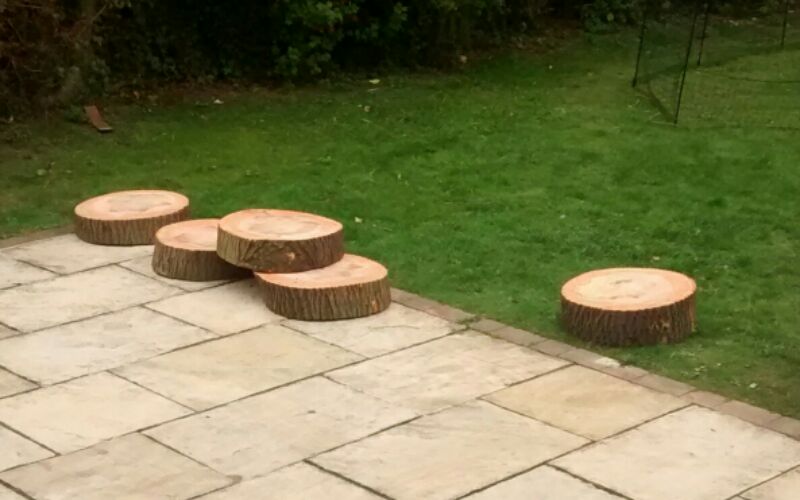Good morning,
I'm hoping that someone might give me some advice and some ideas (if that's not too much trouble).
I saw a team of guys chopping down a tree, and I asked them if I could take away some of the bits, they said "yes" and I've ended up with these in my back garden...

They're about 20" in diameter, so pretty big and very heavy!
My first thought was that I could make some rustic garden stools... I still would like to give that a go. However, I have an initial question (not being a woodworker)...
What should I do to protect these (just in case the weather turns)?
Should I sand them down (just the tops and bottoms) and then put some varnish or stain on them?
What about wax? Or, someone mentioned, creosote?
What would be a good thing for me to do to help protect these discs (as well as getting them under cover)?
Secondly, what do the readers here think? What should I make - if anything different to sturdy wooden stools comes to mind?
If I went for stools... should I go for 3 legs, or 4, should I just drill holes into the base and stuff legs in there, or should I build a frame around the underside? You can tell I'm a novice!
With stools, how do I get a butt-print indent in the top? I can't be sitting on them for years and years until one starts to appear... should I draw out a bottom shape and then just 'get in there' with my triangle sander on 40 grit?
Would you take the bark off the edges, or leave it on?
Any thoughts appreciated, as always.
I'm hoping that someone might give me some advice and some ideas (if that's not too much trouble).
I saw a team of guys chopping down a tree, and I asked them if I could take away some of the bits, they said "yes" and I've ended up with these in my back garden...

They're about 20" in diameter, so pretty big and very heavy!
My first thought was that I could make some rustic garden stools... I still would like to give that a go. However, I have an initial question (not being a woodworker)...
What should I do to protect these (just in case the weather turns)?
Should I sand them down (just the tops and bottoms) and then put some varnish or stain on them?
What about wax? Or, someone mentioned, creosote?
What would be a good thing for me to do to help protect these discs (as well as getting them under cover)?
Secondly, what do the readers here think? What should I make - if anything different to sturdy wooden stools comes to mind?
If I went for stools... should I go for 3 legs, or 4, should I just drill holes into the base and stuff legs in there, or should I build a frame around the underside? You can tell I'm a novice!
With stools, how do I get a butt-print indent in the top? I can't be sitting on them for years and years until one starts to appear... should I draw out a bottom shape and then just 'get in there' with my triangle sander on 40 grit?
Would you take the bark off the edges, or leave it on?
Any thoughts appreciated, as always.

